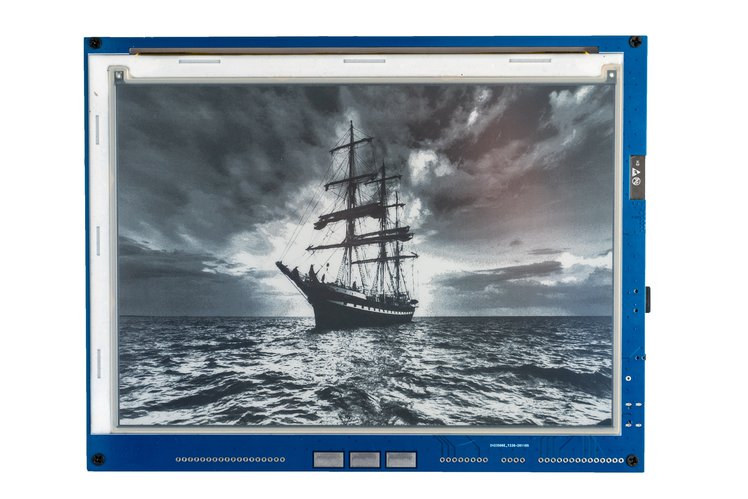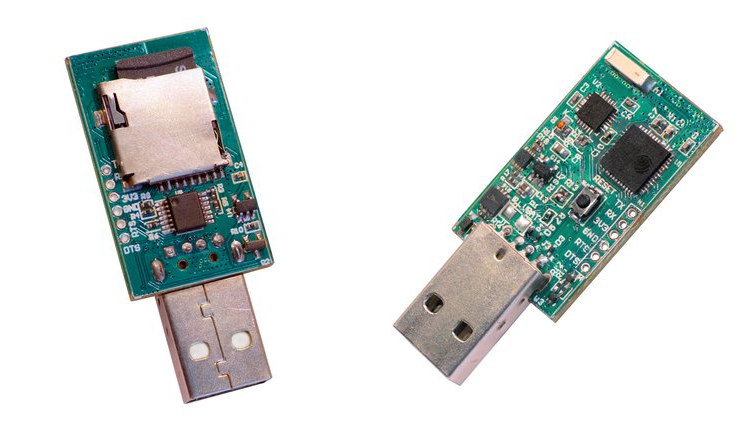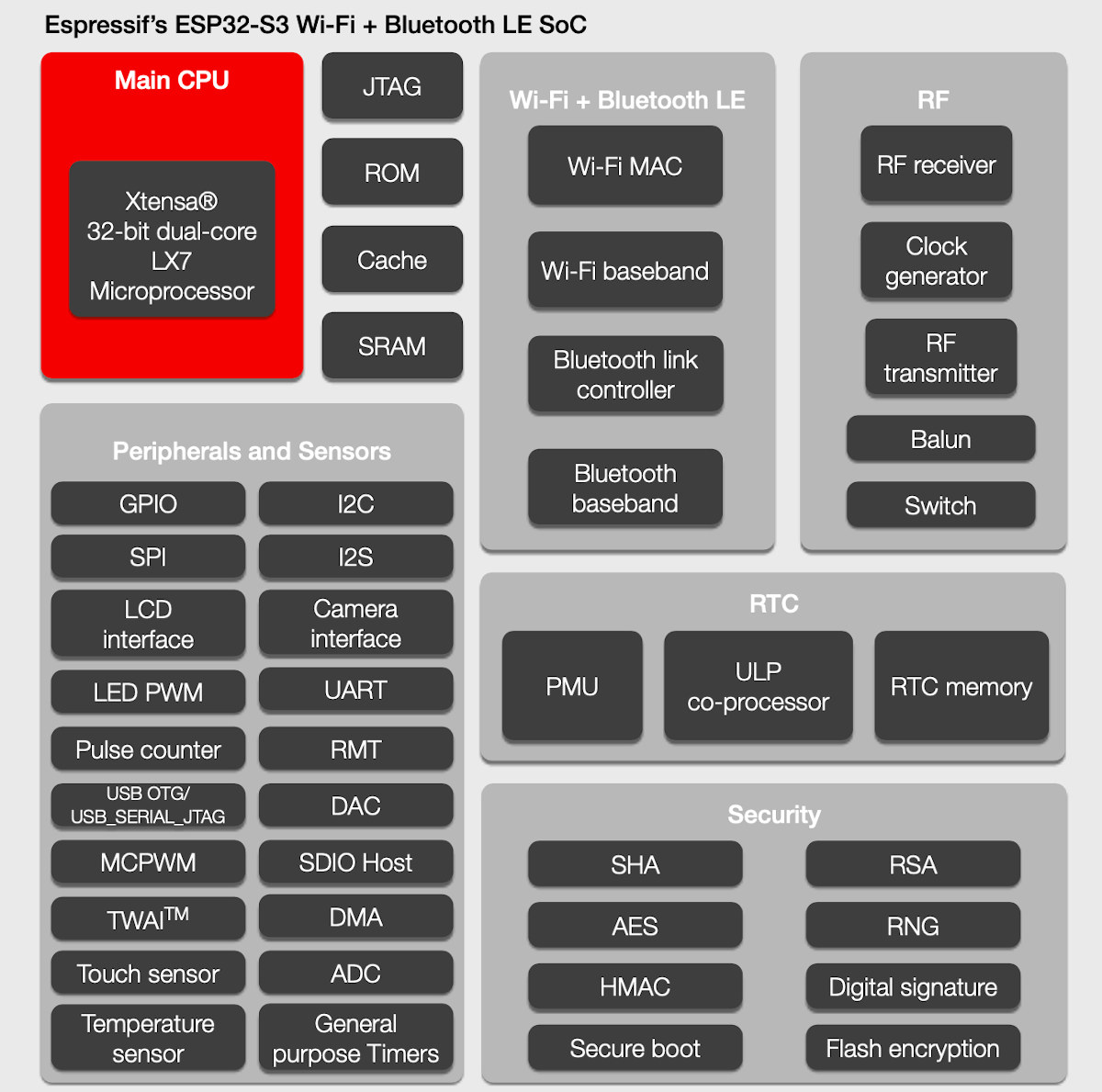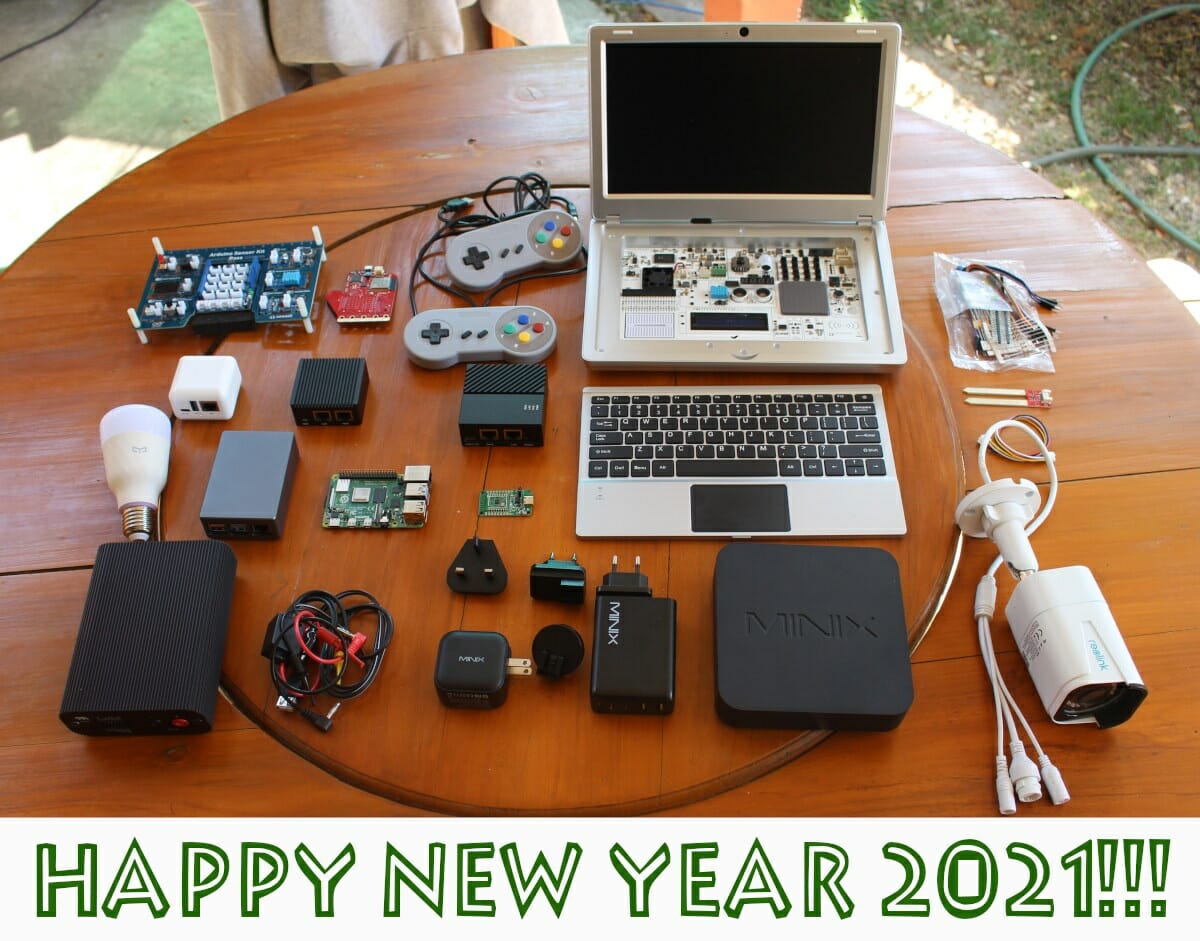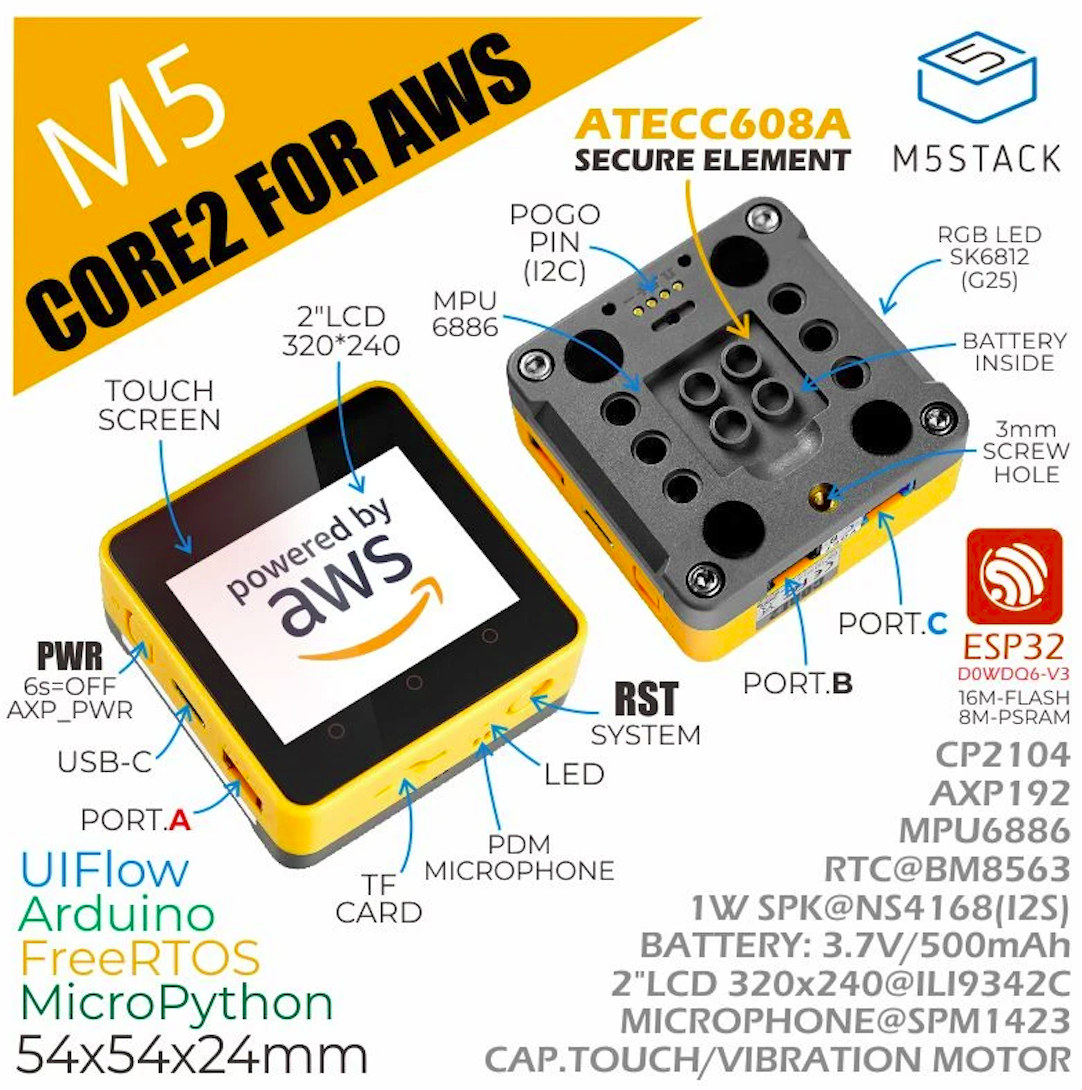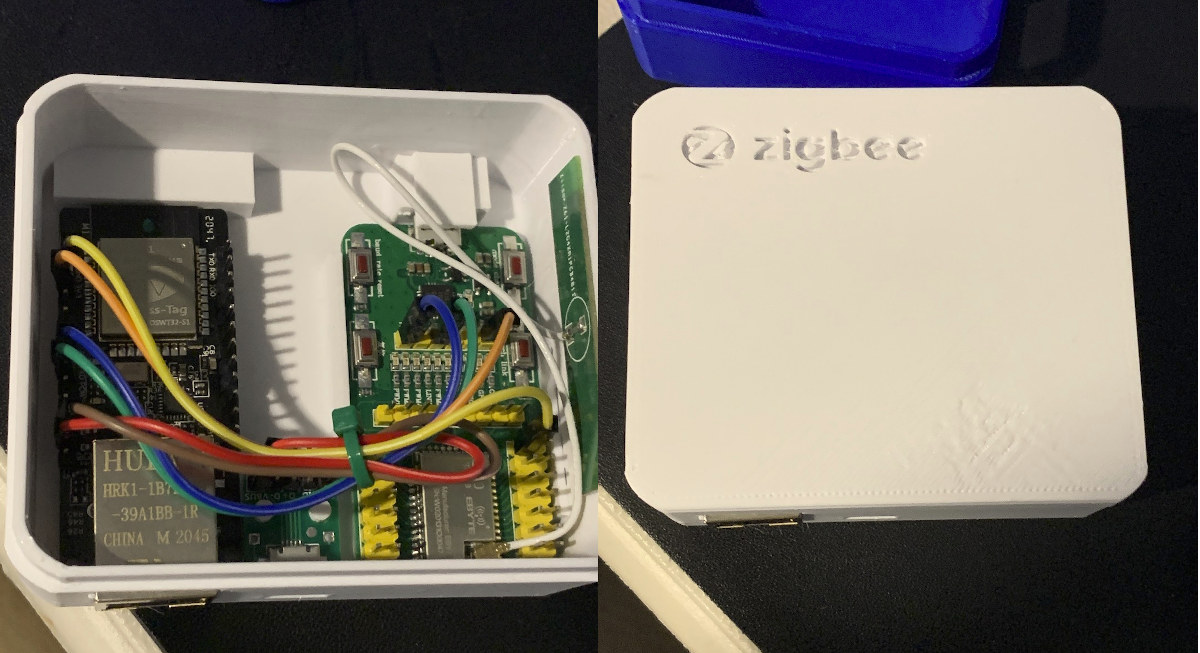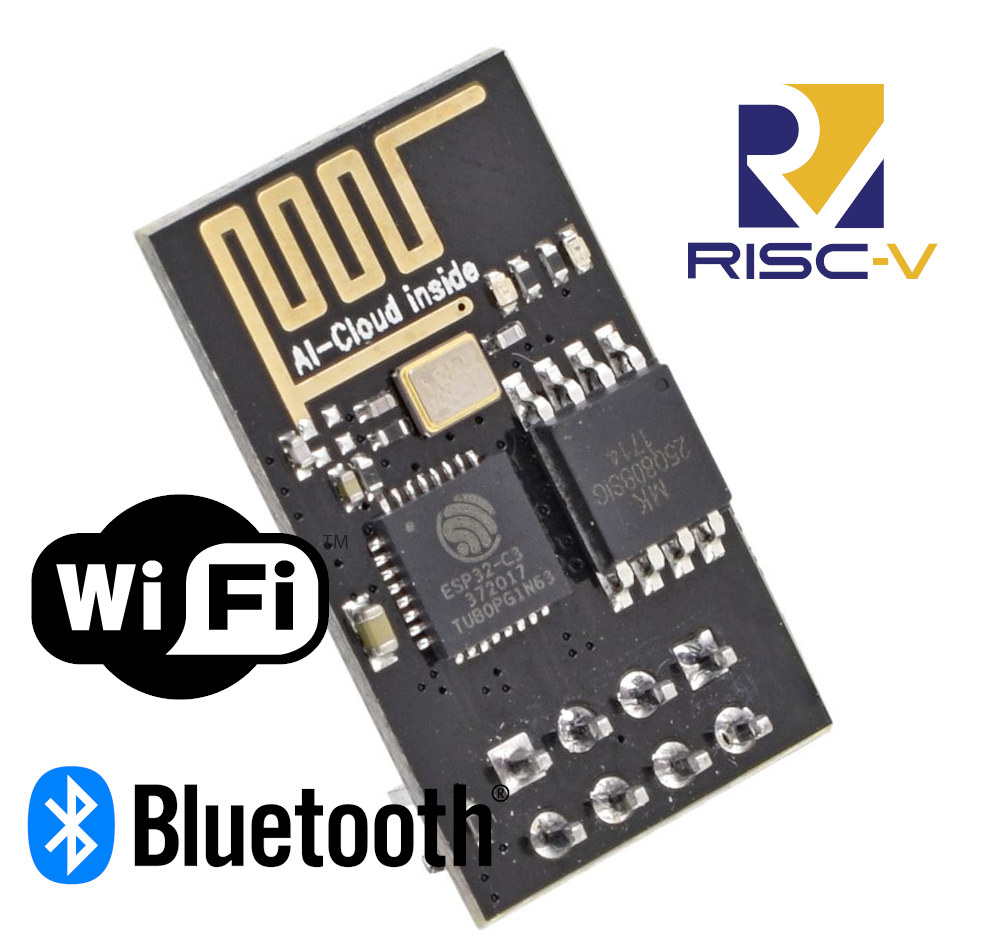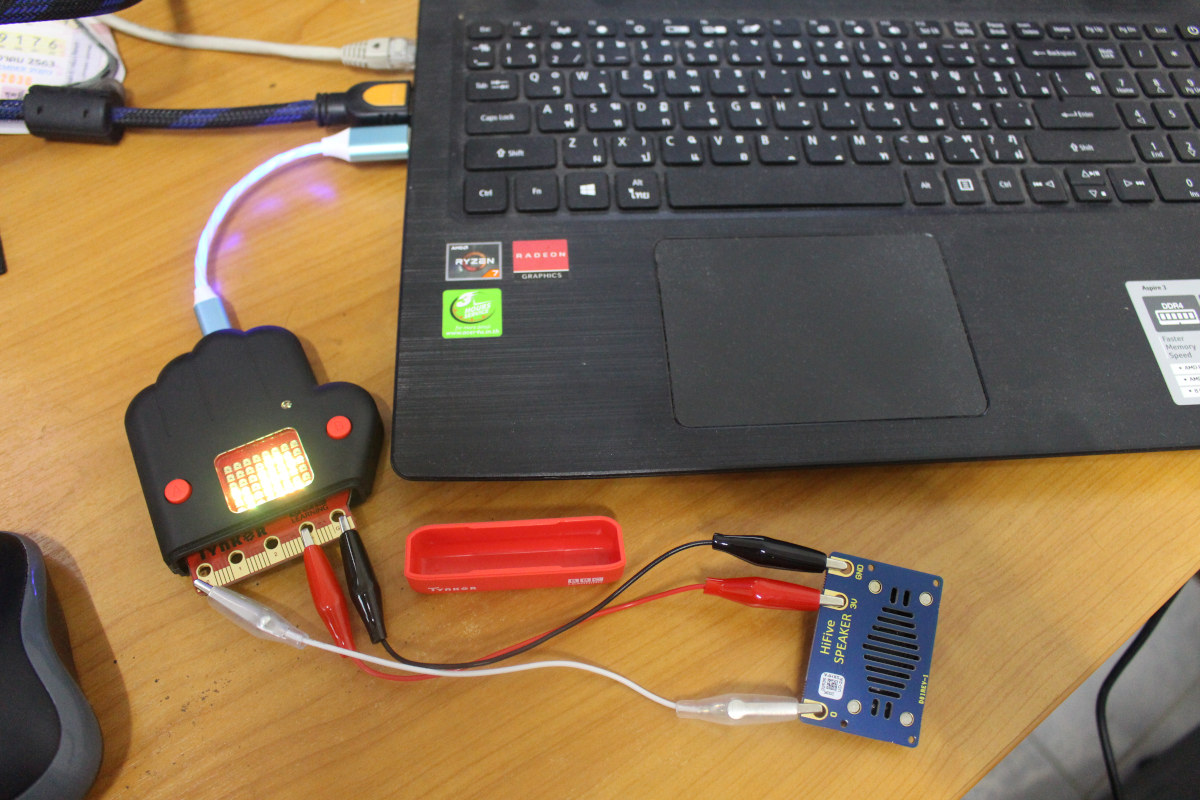Inkplate 6 is an ESP32 powered wireless e-Paper Display based on a recycled Kindle E-reader display, and that e-Radionica launched in December 2019 via a crowdfunding campaign. The company says backers were “happy about the versatility and simplicity of the display” but wished for a larger display, a faster refresh rate, and extra features. This gave birth to an upgraded version: Inkplate 10. The new ESP32 wireless display comes with a recycled 9.7-inch display with 1200 x 825 resolution, up to 38% faster refresh rates, as well as extra GPIO pins, an RTC clock, a USB Type-C port, and lower power consumption. Inkplate 10 specifications: Wireless module – ESP32 WROVER module with dual-core ESP32 processor with Wi-Fi & Bluetooth 4.0 (BLE) connectivity, 8MB PSRAM, 4MB flash External storage – MicroSD card socket Display – 9.7-inch, 1200 x 825 e-paper display with support for grayscale, partial updates, and quick refresh cycles: […]
Maypole MicroSD card reader comes with ESP32 for WiFi, smart storage (Crowdfunding)
Several years ago, we covered Zsun WiFi card reader a tiny USB card reader with WiFi and a battery that allowed users to access files via USB or WiFi from any device. People managed to hack the device and run OpenWrt on the little MicroSD card reader, but this required either to open the hardware and do some soldering, or use another method that could potentially brick the hardware, so not an ideal solution. But now Akshar Vastarpara has come with a similar device. Maypole is an open-source hardware MicroSD card reader powered by Espressif ESP32 processor providing both WiFi and the resources for smarter storage. It comes with an optional battery too to access files even without having to connect it to a USB port. Maypole hardware specifications: Storage – Swappable MicroSD cards up to 32GB Wireless Connectivity WiFi 2.4 GHz WiFi 4 via ESP32 WiSoC, Up to 4 […]
ESP32-S3 dual-core WiFi and Bluetooth LE 5 SoC supports AI acceleration for AIoT applications
Back in September, we reported that Espressif Systems planned to release a new ESP32-S3 with “AI instructions and multi-CPU cores” with few other details, except the chip would also be part of the MINI-series wireless modules. Now we have many more details, as the Shanghai-based company has now officially announced ESP32-S3. The processor features dual Tensilica LX7 cores, 2.4 GHz WiFi 4 & Bluetooth 5 connectivity, and as expected supports AI instructions to cater to the AIoT (AI + IoT) market. ESP32-S3 key features and specifications: CPU Dual-core Tensilica LX7 up to 240 MHz with additional vector instructions for AI acceleration ULP core to handle low power modes Memory – 512 KB of internal SRAM Storage – Octal SPI flash and PSRAM support (supports larger, high-speed devices compared to ESP32) Cache – Connectivity 2.4 GHz 802.11 b/g/n Wi-Fi 4 with 40 MHz bandwidth support Bluetooth Low Energy (BLE) 5.0 connectivity […]
Year 2020 in review – Top ten posts and stats
It’s this time of the year when we look back at what happened, and what may be next. 2020 did not pan out as planned in more ways than one, but there were still some interesting developments. Based on 2019 announcements, 2020 was promising to be an exciting year for Amlogic and Rockchip with the expected launch of RK3588 and S908X high-end processors for 8K capable devices, but we’ll have to wait for 2021 for this to happen. Instead, the most interesting processor of the year from the Allwinner, Amlogic, and Rockchip offerings was probably Amlogic S905X4 processing adding AV1 hardware decoding. As pointed out in our “RISC-V 2020 highlights” post, it was a fairly eventful year for RISC-V architecture, although there’s still a long road ahead, especially for application processors. We had seen some general-purpose and Bluetooth RISC-V MCUs in 2019, but 2020 saw the launch of the first […]
AWS IoT EduKit leverages M5Stack Core2 ESP32 hardware
M5Stack Core2 is a neatly packed ESP32 IoT development kit with a 2-inch touchscreen display, motion sensor, a microphone., and a built-in battery that was launched last September. The hardware has been selected by Amazon Web Services and gone through some small modifications including the addition of a secure element, and a yellow paint job giving birth the the “AWS IoT EduKit” hardware and software solution designed to “learn how to build IoT applications using AWS services through a prescriptive learning program”. M5Stack Core2 for AWS IoT EduKit specifications are pretty similar, but with a few tweaks here and there: SoC – Espressif ESP32-D0WDQ6-V3 dual-core Xtensa LX6 processor clocked at up to 240MHz with 520KB SRAM, Wi-Fi, and dual-mode Bluetooth connectivity External Memory – 8MB PSRAM Storage – 16MB flash storage, MicroSD card slot up to 16GB Display – 2-inch IPS LCD screen with 320×240 resolution (ILI9342C driver), and touchscreen […]
DIY project creates Zigbee to Ethernet bridge with WT32-ETH01
We previously wrote about Ebyte E180-ZG120B-TB an inexpensive ($9.90) Zigbee 3.0 evaluation board based on Silabs EFR32MG1B Arm Cortex-M4 wireless MCU and the equally cheap ($7.78) WT32-ETH01 ESP32 Ethernet board. What do they have in common? Absolutely nothing! But GitHub user tube0013 decided to connect both boards over UART to create a Zigbee to Ethernet DIY coordinator/bridge running open-source firmware. The hardware also includes a Micro USB adapter for power, several 10cm jumper wires, and he/she also designed a 3D printed case. EZSP-Firmware is used for the Ebyte Zigbee 3.0 board, and ESPHome open-source home automation firmware for the ESP32 board. You’ll also need serial to IP code and ESPHome config. Note that flashing firmware to the Ebyte requires a programmer, and the developer used a J-link EDU Mini together with Silicon Labs’ Simplicity Commander. As mentioned above, a 3D printed case has also been designed, so everything is neatly […]
ESP32-C3 WiFi & BLE RISC-V processor to launch at ESP8266 price
[Update December 2020: While we first reported ESP32-C3 would be pin-to-pin compatible to ESP8266 based on the tweet mentioned in the post, the datasheets show both are clearly not pin-to-pin compatible, and instead it looks like the goal is to provide pin-to-pin compatible modules] When we reported about ESP32-S2-MINI modules last September, we also noted Espressif teased us with ESP32-S3 and ESP32-C3 with close to no details. ESP32-S3 is expected to be a multi-core WiFI & Bluetooth processor with AI instructions/accelerator, but there were no details about ESP32-C3 at all, and we only found out it would be a RISC-V processor several weeks ago. But Twitter user Johnny Wu posted a screenshot in Chinese and its translation claiming ESP32-C3 was finally released by Espressif Systems. [Update: The datasheet has been released. See comments.] ESP32-C3 WiSoC is pin to pin compatible with ESP8266, works with ESP32 development framework (e.g. ESP-IDF), supports […]
BBC Dr Who HiFive Inventor Coding Kit review – Tynker visual programing and MicroPython
The BBC Doctor Who HiFive Inventor Coding Kit was announced at the end of November 2020 with the goal of teaching IoT to young kids. But one day, I noticed the postman left a package on the ground right next to my house’s gate for some reason. I had no idea what it could be until I read it was from SiFive on the package. So here I am about to review BBC Doctor Who HiFive Inventor Coding Kit! The package actually included two small packages with one being an “expansion board”… HiFive Inventor Coding Kit Unboxing We’ve already written about the specs in the announcement post, but here they are again for those who forgot it’s based on SiFive FE310 RISC-V microcontroller and ESP32 for WiFi and Bluetooth. Let’s open the thinner “expansion board” package first. It’s actually the HiFive Inventor board – aka the mainboard – that comes […]


